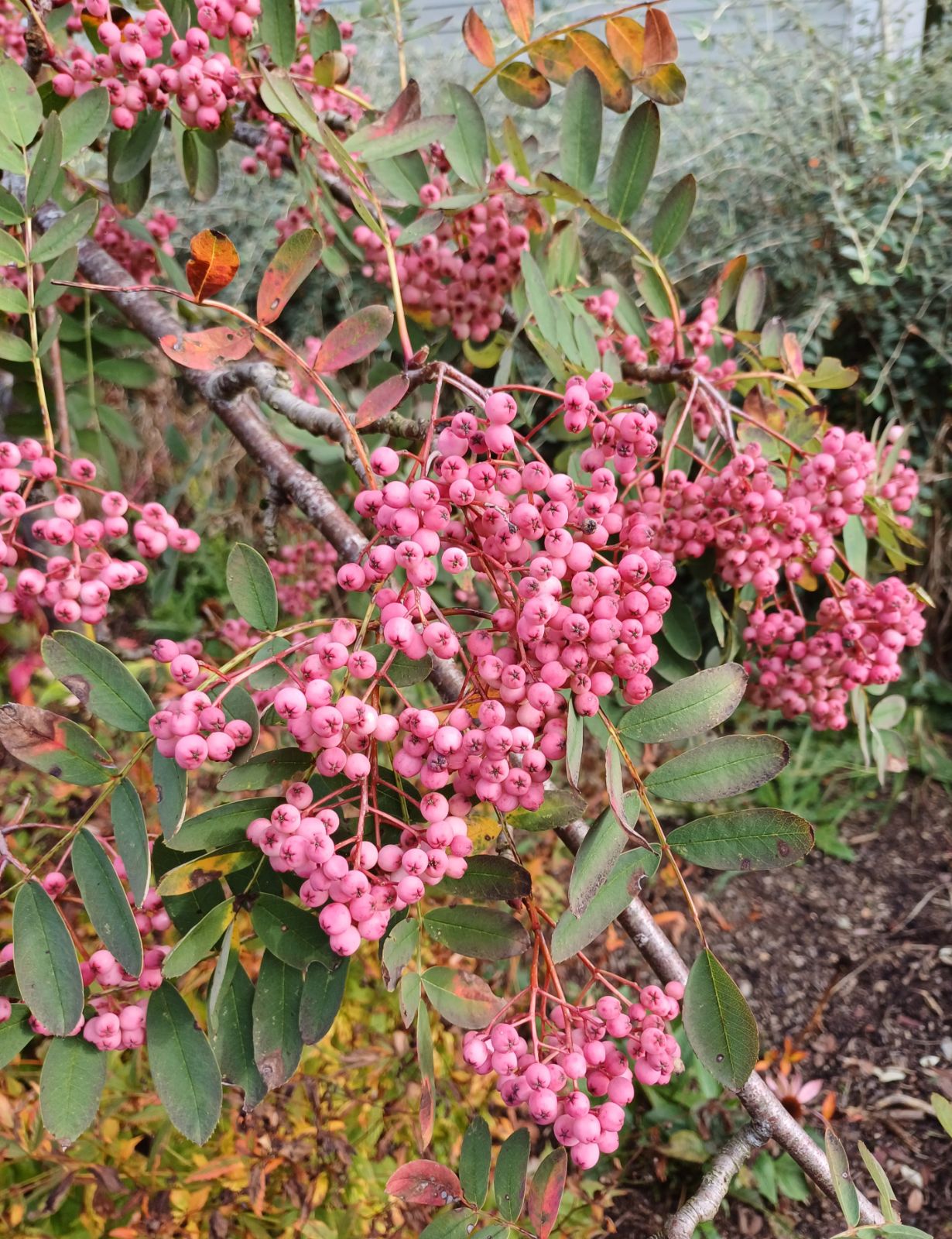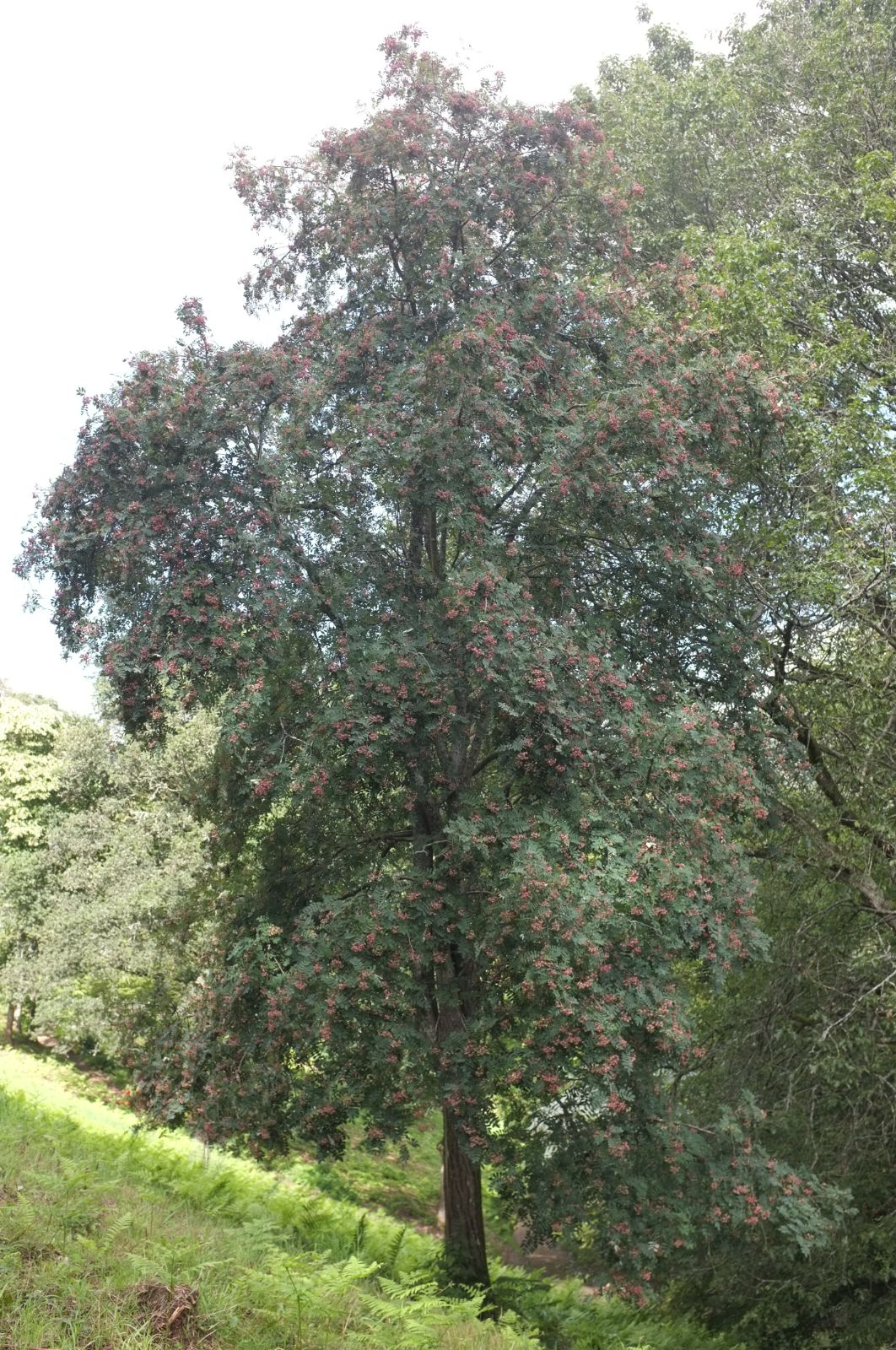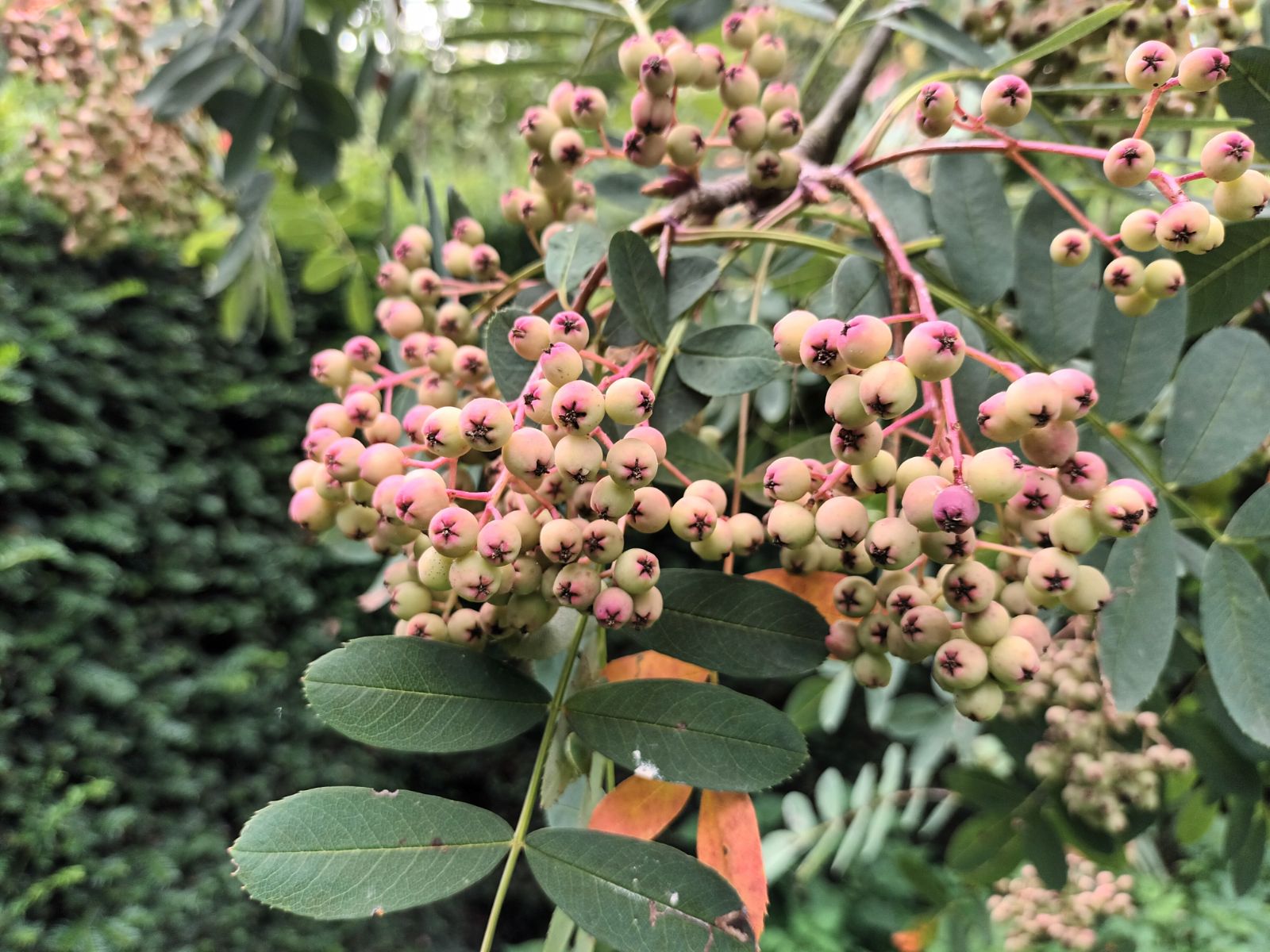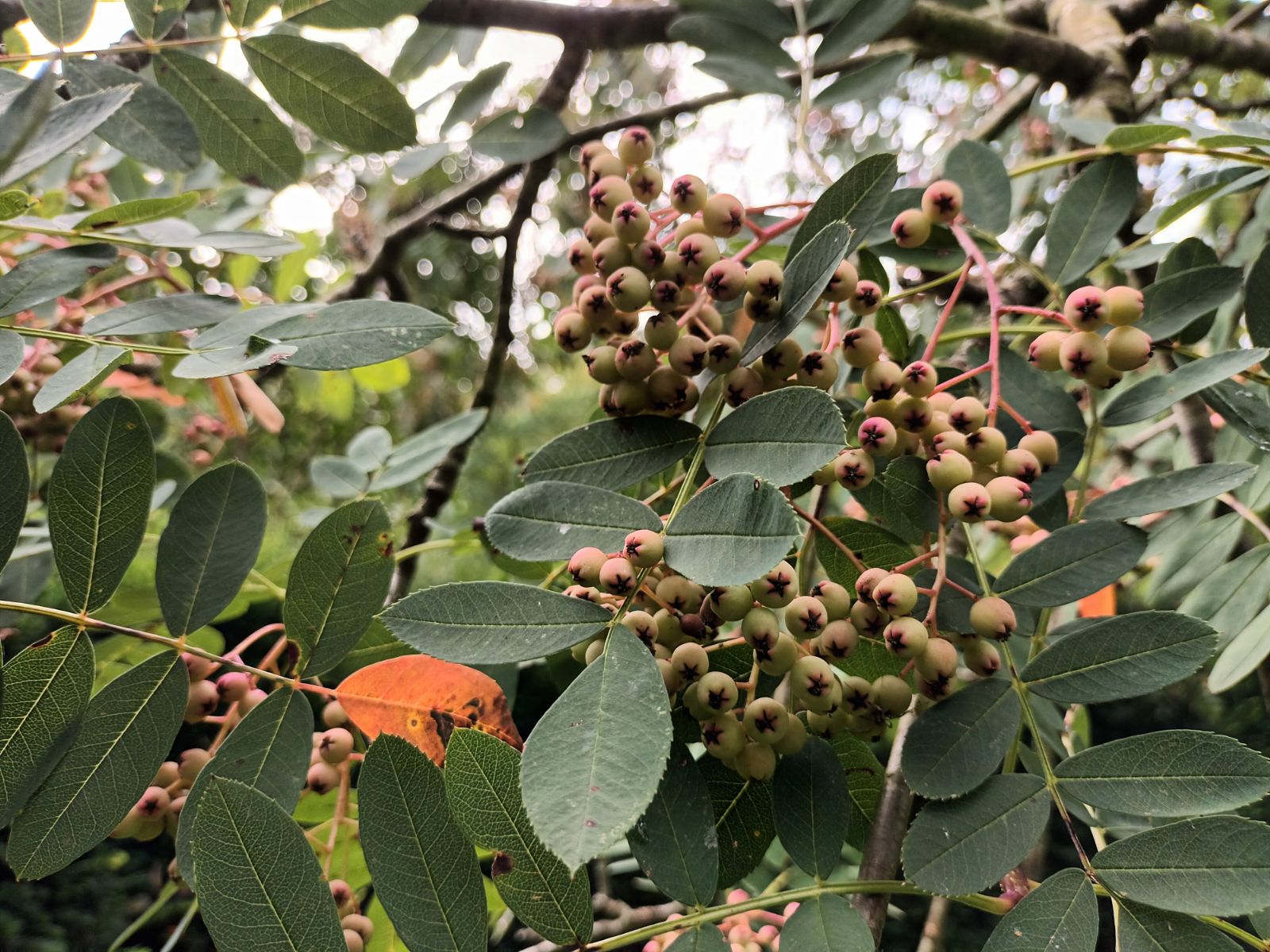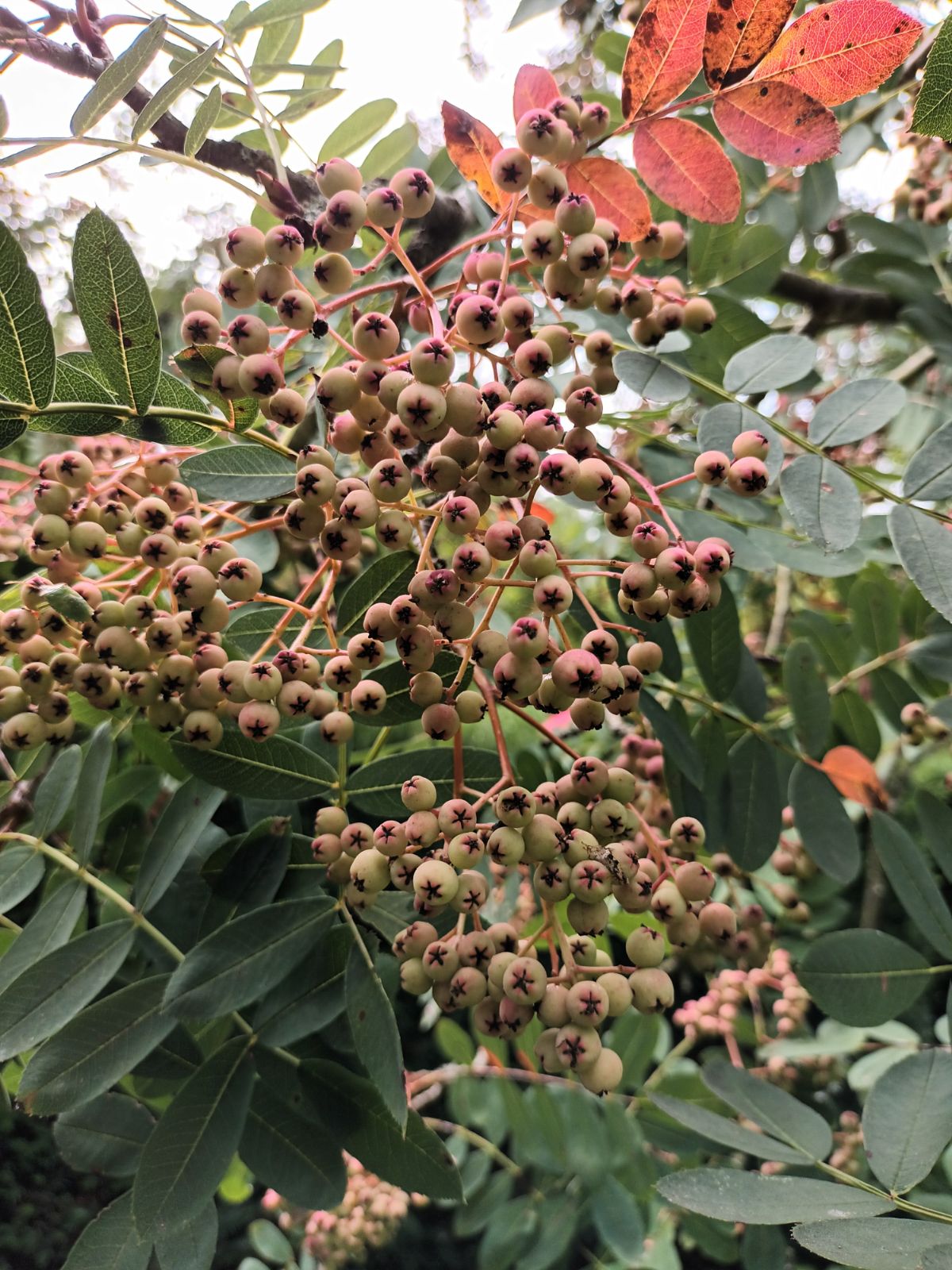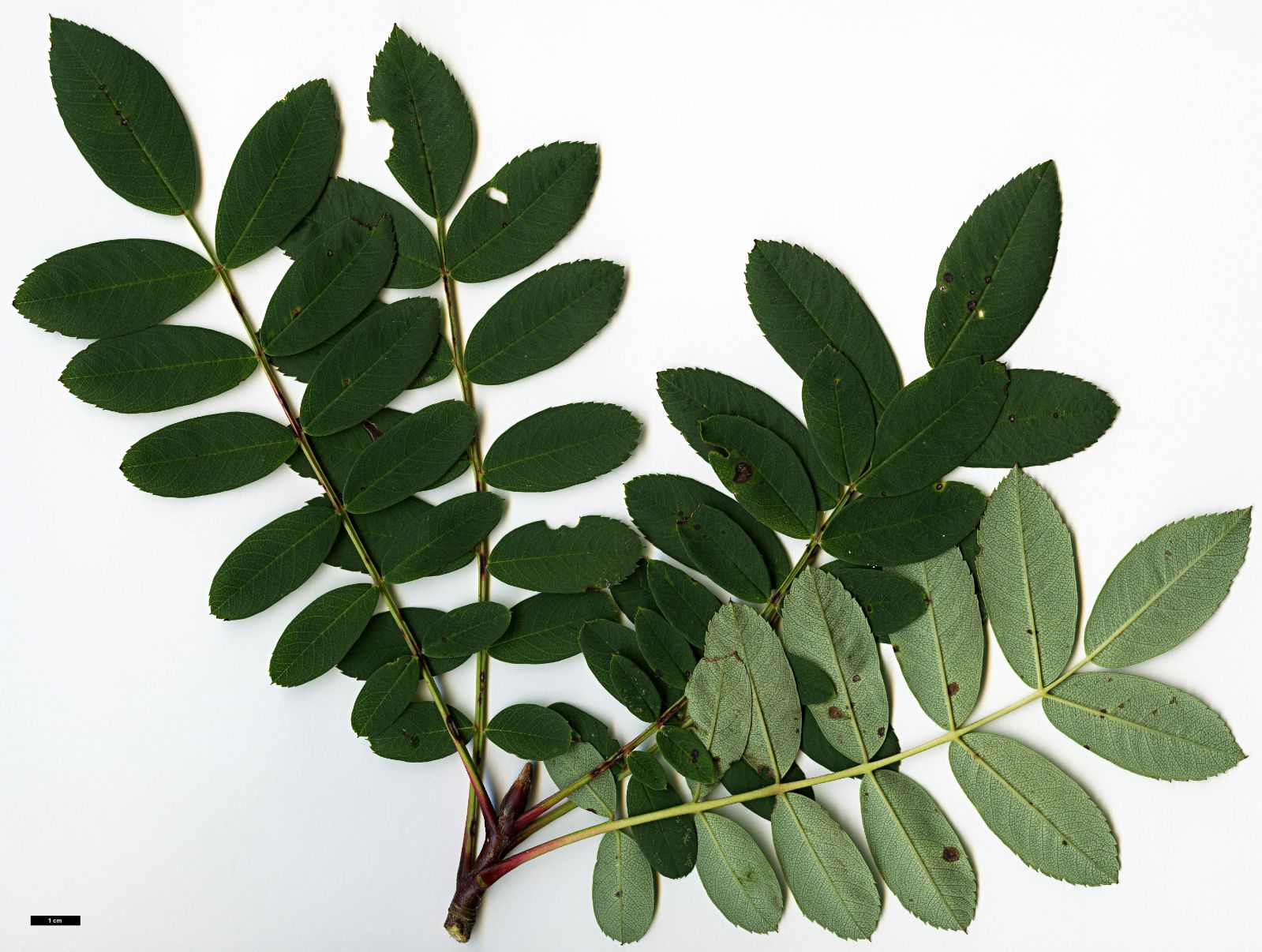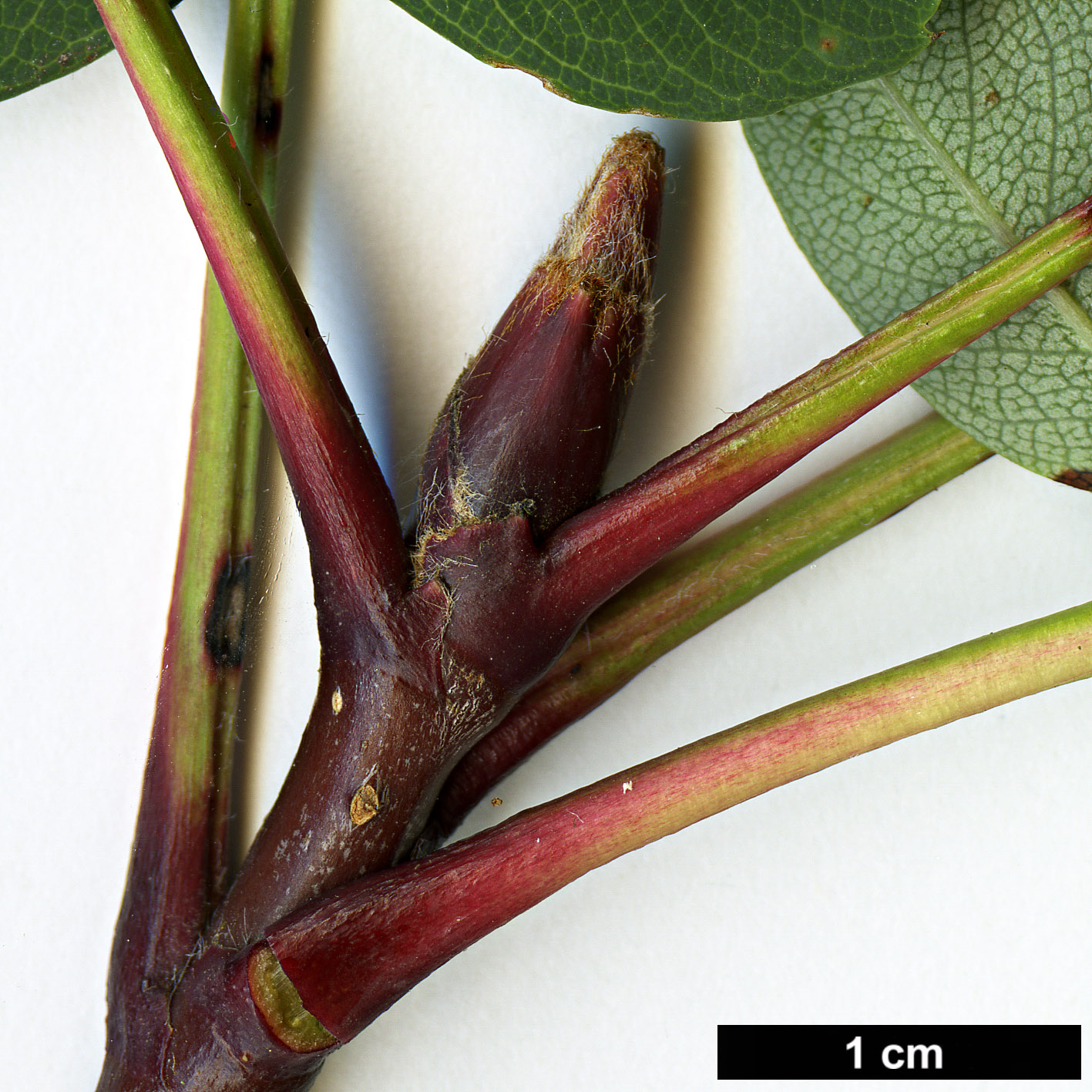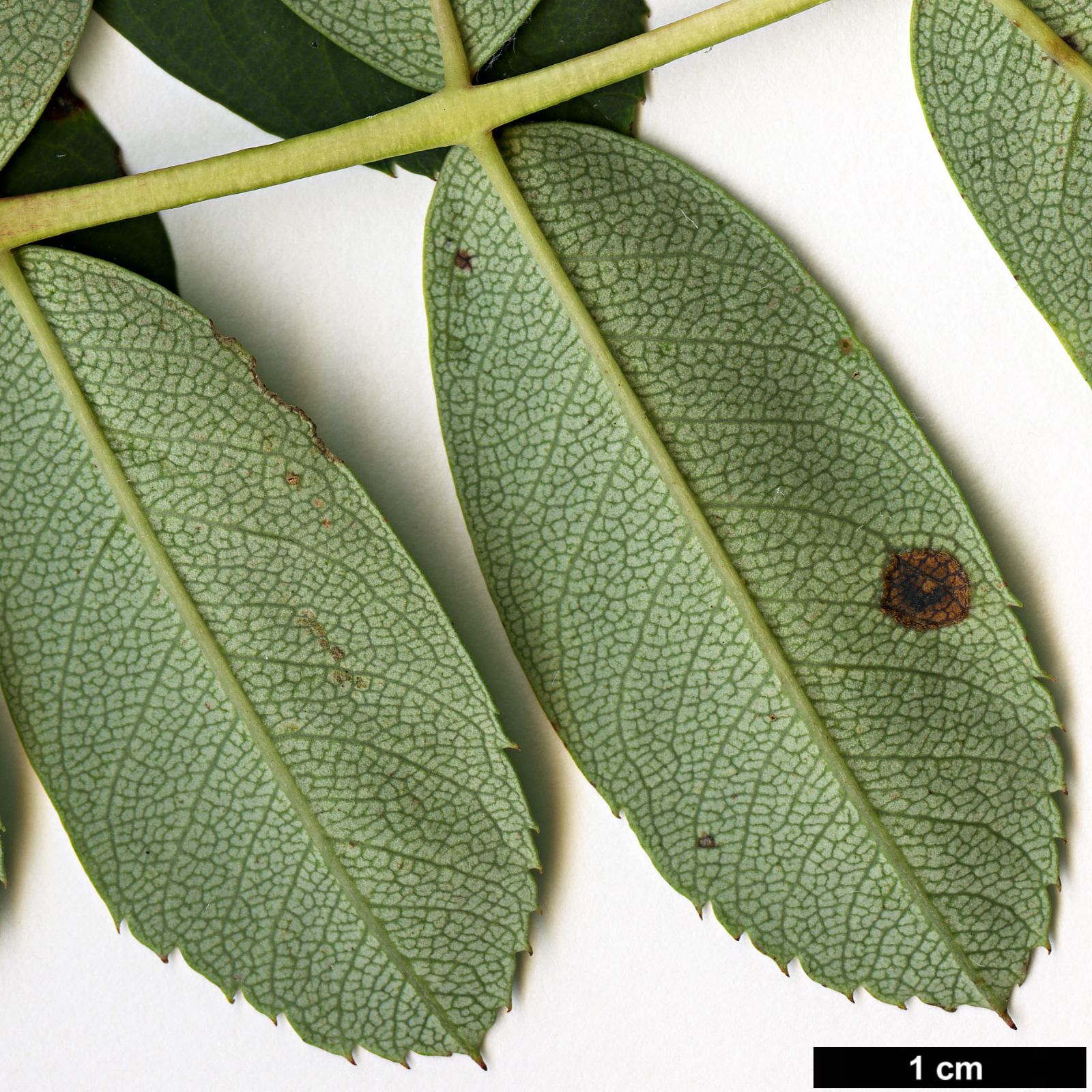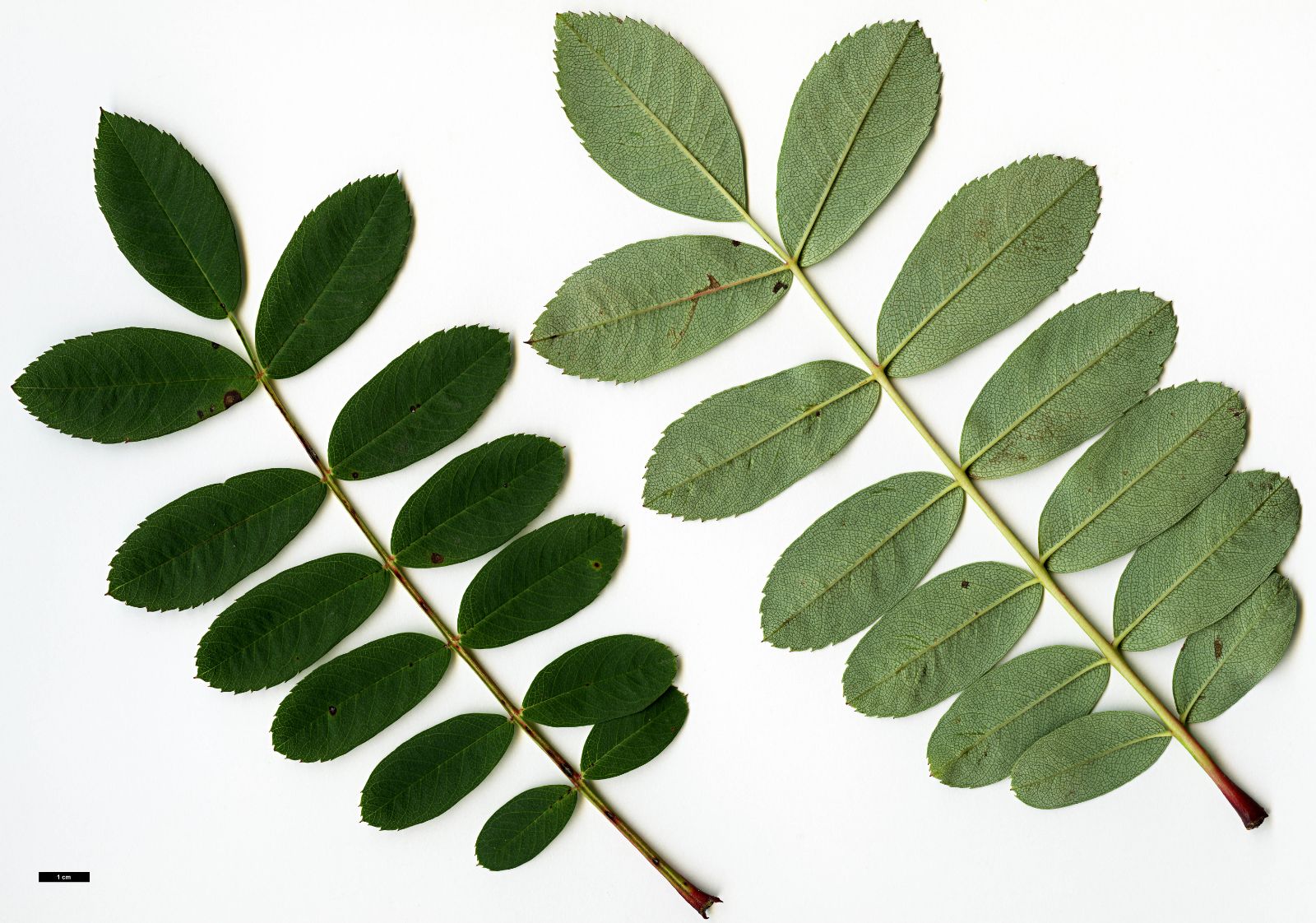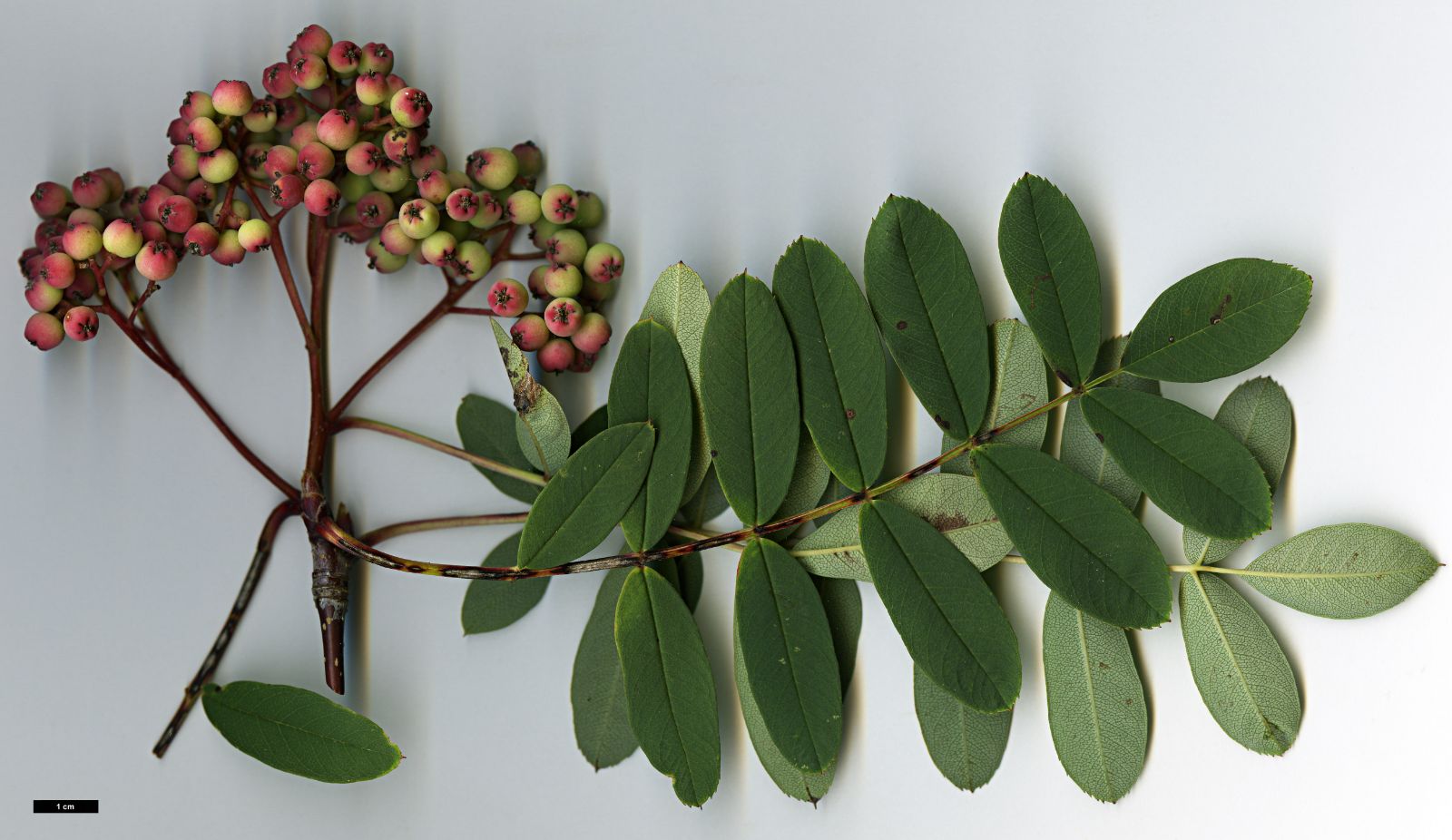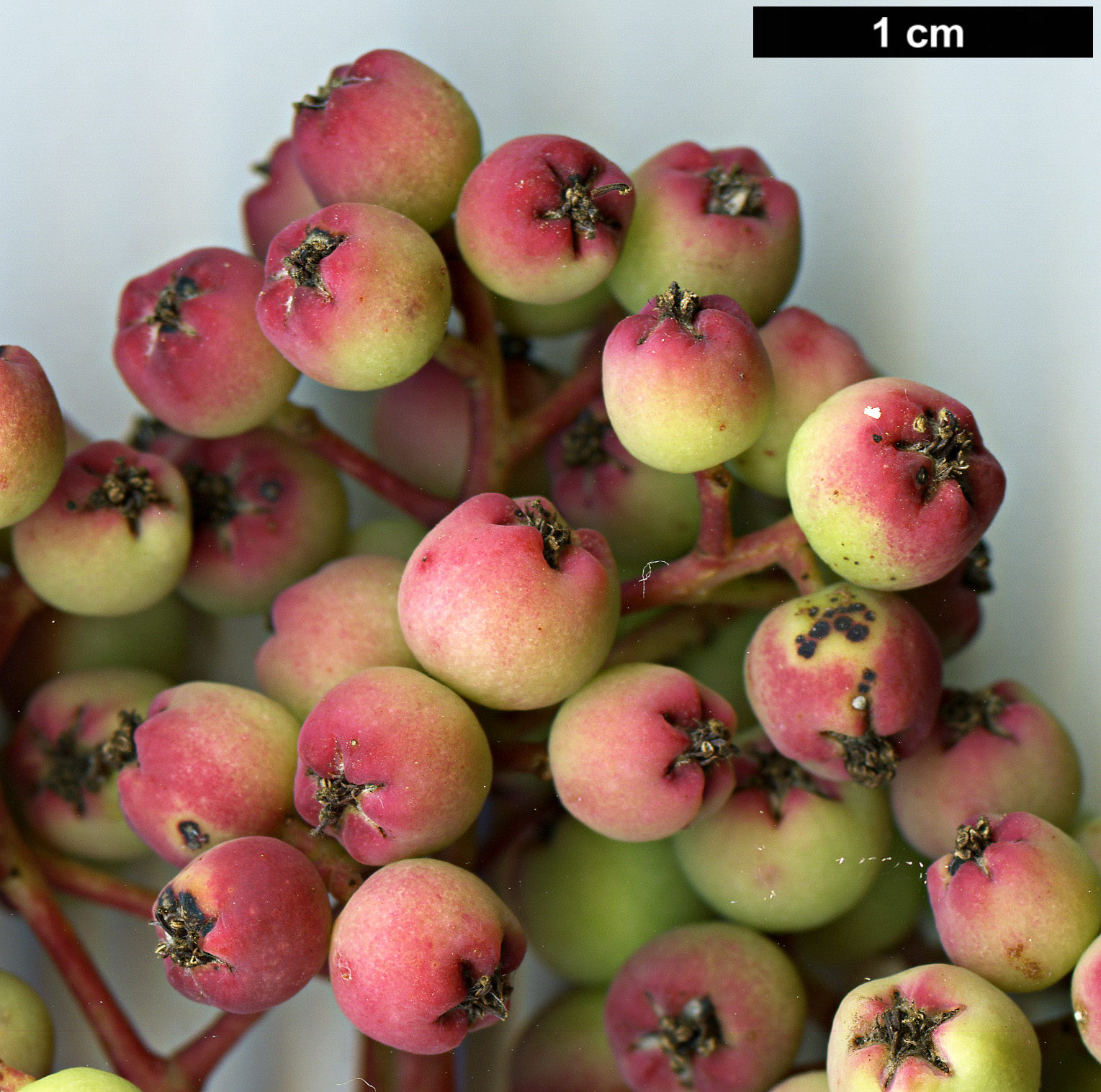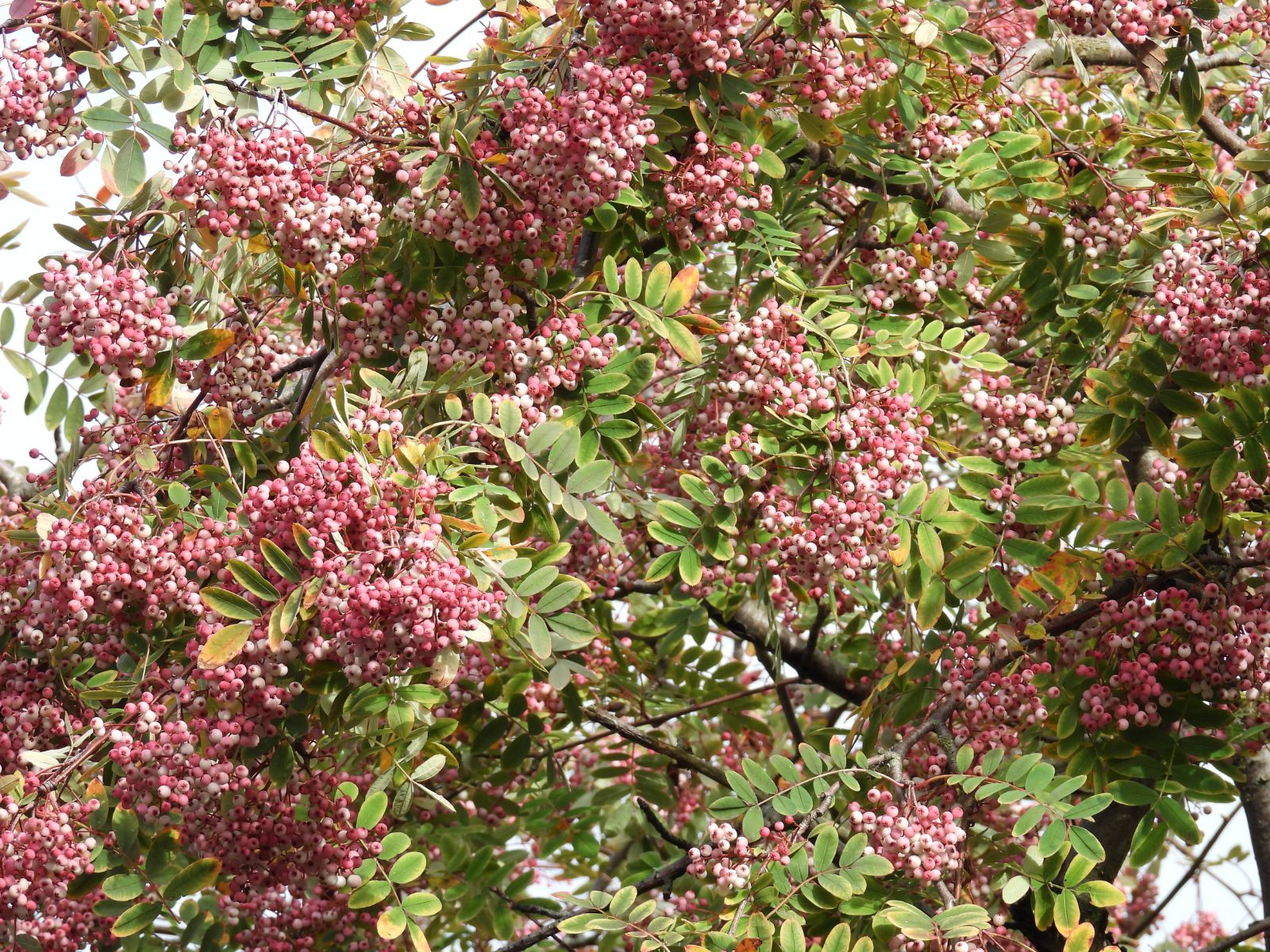Sorbus pseudohupehensis
Sponsor
Kindly sponsored by
This genus has been sponsored and new text is being prepared.
Credits
Article from New Trees by John Grimshaw & Ross Bayton
Recommended citation
'Sorbus pseudohupehensis' from the website Trees and Shrubs Online (treesandshrubsonline.
Genus
Synonyms
- S. hupehensis hort. non C.K. Schneid. (pink-fruited form)
- S. hupehensis var. obtusa C.K. Schneid.
- S. laxiflora Koehne
- S. oligodonta hort. non (Cardot) Hand.-Mazz.
- S. wilsoniana hort. non C.K. Schneid.
Other taxa in genus
- Sorbus americana
- Sorbus amoena
- Sorbus arachnoidea
- Sorbus aucuparia
- Sorbus carmesina
- Sorbus cashmiriana
- Sorbus commixta
- Sorbus coxii
- Sorbus decora
- Sorbus discolor
- Sorbus ellipsoidalis
- Sorbus esserteauiana
- Sorbus fansipanensis
- Sorbus foliolosa
- Sorbus forrestii
- Sorbus glabriuscula
- Sorbus glomerulata
- Sorbus gracilis
- Sorbus helenae
- Sorbus hupehensis
- Sorbus hypoglauca
- Sorbus insignis
- Sorbus 'Joseph Rock'
- Sorbus khumbuensis
- Sorbus koehneana
- Sorbus kongboensis
- Sorbus kurzii
- Sorbus lingshiensis
- Sorbus matsumurana
- Sorbus microphylla
- Sorbus muliensis
- Sorbus olivacea
- Sorbus parvifructa
- Sorbus pohuashanensis
- Sorbus poteriifolia
- Sorbus prattii
- Sorbus pseudovilmorinii
- Sorbus randaiensis
- Sorbus reducta
- Sorbus rinzenii
- Sorbus rubescens
- Sorbus rufopilosa
- Sorbus rushforthii
- Sorbus sambucifolia
- Sorbus sargentiana
- Sorbus scalaris
- Sorbus sitchensis
- Sorbus tianschanica
- Sorbus ursina
- Sorbus vilmorinii
- Sorbus wallichii
- Sorbus wilsoniana
Tree to 15 m. Branchlets deep red. Buds ~1.2 cm, conical to ovoid with reddish brown and/or white hairs on the margins and apices of the scales. Leaves to 17.5 cm long, with five to seven pairs of leaflets. Leaflets to 4.4 × 1.7 cm, gradually decreasing in length towards the stem, obovate, bluish green glaucous above, papillose beneath; in autumn, leaves turning dark chocolate then brilliant red colour. Inflorescences pyramidal. Fruit very hard, 0.7 × 0.8 cm, white flushed with crimson; sepals very fleshy, carpels four to five. Tetraploid apomict (2n = 68). McAllister 2005a. Distribution CHINA: Yunnan (Lijiang). Habitat Mountain thickets. USDA Hardiness Zone 7. Conservation status Not evaluated. Illustration McAllister 2005a. Cross-references B431–432 (as S. hupehensis), K335 (as S. hupehensis var. obtusa).
As discussed above (pp. 797, 804), Sorbus pseudohupehensis has long been known as S. hupehensis (pink-fruited form) or as S. hupehensis var. obtusa, and still appears in some recent literature as S. oligodonta (Wharton et al. 2005), but should now be known under its new name. It is an extremely familiar tree, widely grown for its blue-green leaves and persistent pinkish fruits that give a wonderful display long into the winter after the tree has dropped its red autumn plumage. As with S. glabriuscula, this is seen best against a dark background. It can develop the unfortunate habit of becoming biennial-fruiting, like some apples; a number of its allies are more reliable in this regard, and have equally good effect, but are not likely to supplant it in popularity. So-called selections such as ‘Pink Pagoda’ are identical to every other member of the microspecies. As with all apomictic Sorbus, it should be grown from seed to ensure the most attractively shaped and vigorous trees. Its origin is believed to have been seed gathered in the Lijiang range of Yunnan by George Forrest in the early 1920s, but it is not now attributable with certainty to any particular collection (McAllister 2005a).

